Peperomia albovittata is living proof that good things come in small packages.
This compact beauty comes with all the carefree benefits of a Peperomia in a size perfect for terrariums and small windowsills alike.
With gorgeous deep green or brownish-orange veins that streak through the leaves, you can see where the “Peacock Peperomia” comes from (though the jury is still out on the ‘Piccolo Banda’ name…).
Growing to less than 12 inches in size, this plant has plenty of character for such a small option. Petite, easy to care for, and pretty – what more could you want in a plant?
Find out how to grow the stunning Peperomia albovittata ‘Piccolo Banda’ both in and out of terrariums.
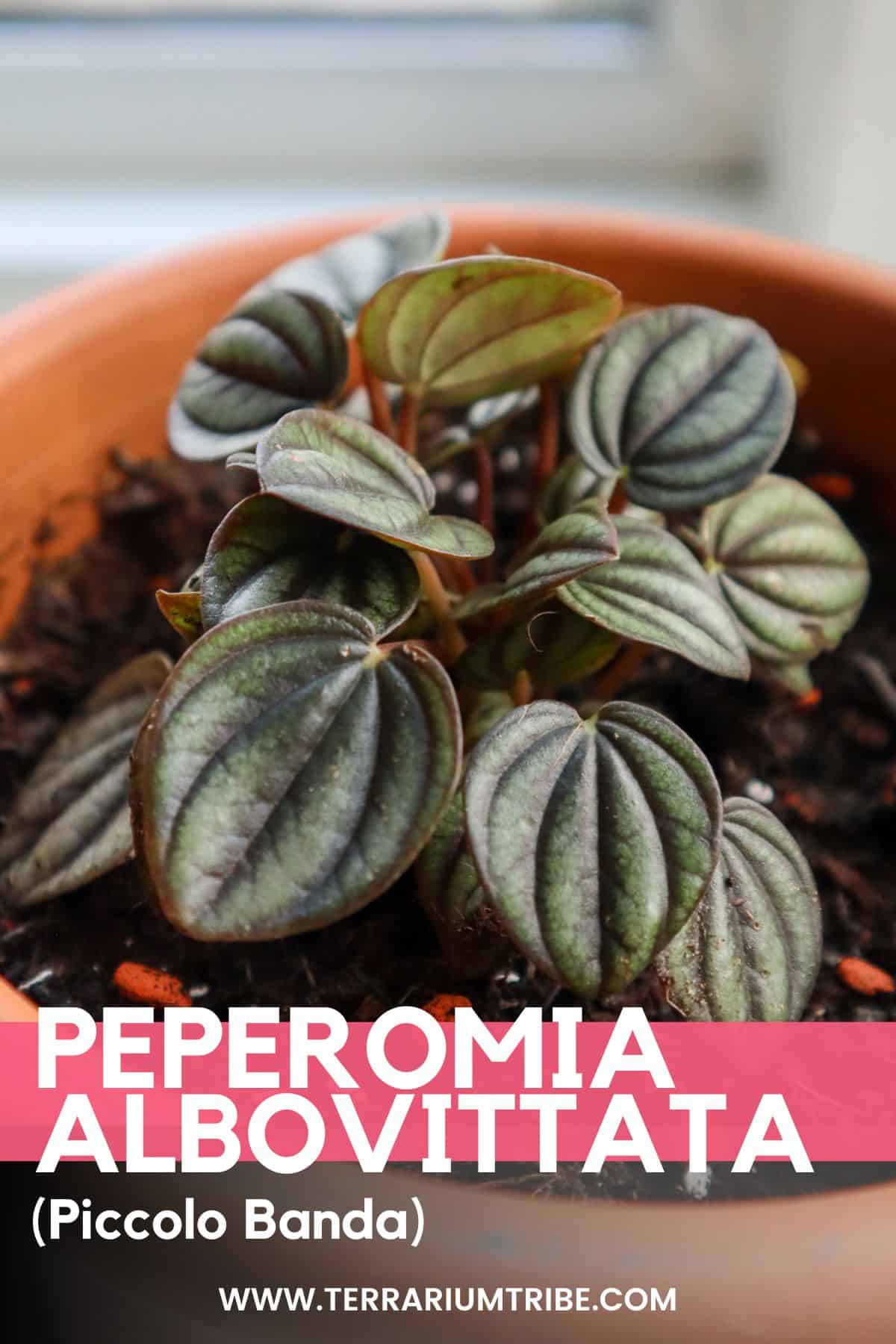
Where to Buy Peperomia albovittata ‘Piccolo Banda’
See the links below to purchase from reputable terrarium plant shops and marketplaces (may include affiliate links).
Peperomia albovittata Care & Growth
| Plant Type | Foliage, epiphyte |
| Lighting | Medium light |
| Temperature | 65-85°F (18-29°C) |
| Watering | Low to moderate, even moisture |
| Humidity | Moderate humidity (40-60%) |
| Growth | 4-12 inches (10-30 cm) |
Lighting
As with most Peperomia, the Piccolo Banda prefers bright indirect light.
So, despite being a semi-succulent plant, you definitely can’t be placing these on a windowsill with your other full-sun succulents. Direct sunlight is off the cards for these delicate leaves.
They’re actually natural epiphytes, typically found growing on plants and trees in the understory of tropical rainforests. So they’re used to lower light levels, too.
All of this makes them excellent indoor plant and terrarium candidates. They really can handle some of the shadier areas of the home just fine.
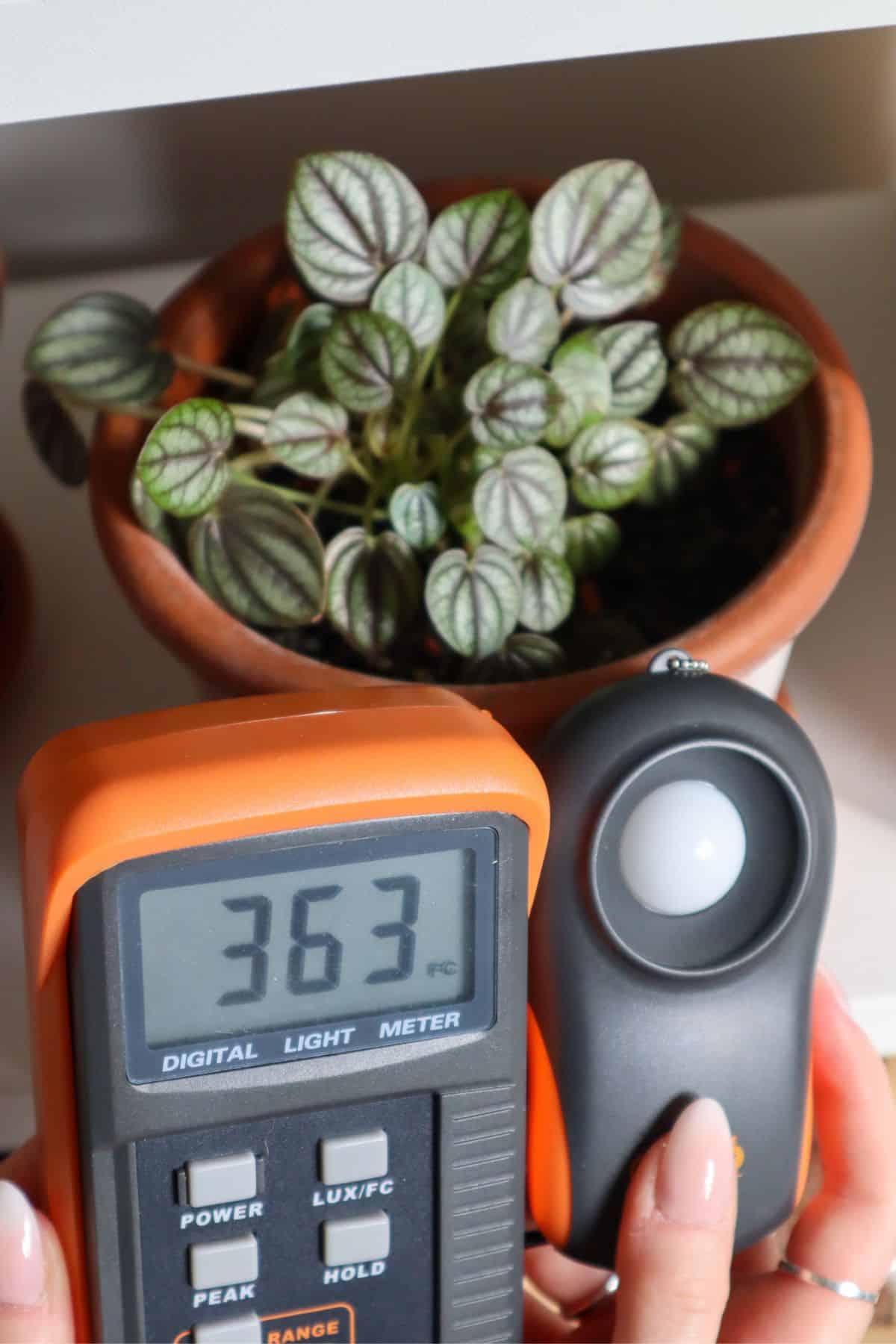
Watering
This semi-succulent plant may not share the same lighting requirements as its full-sun cousins, but it does share their water-retentive qualities.
Honestly, those thick, juicy leaves aren’t just for bringing the boys to the yard. They’re excellent stores of moisture, which gives these Peperomia a remarkable drought tolerance.
In the home, this means they’ll need watering a lot less than your average tropical houseplant.
So paired with the fact that they’re more susceptible to root rot (they’re epiphytes, after all), you’ll want to make sure your plant is getting enough time to dry out between watering.
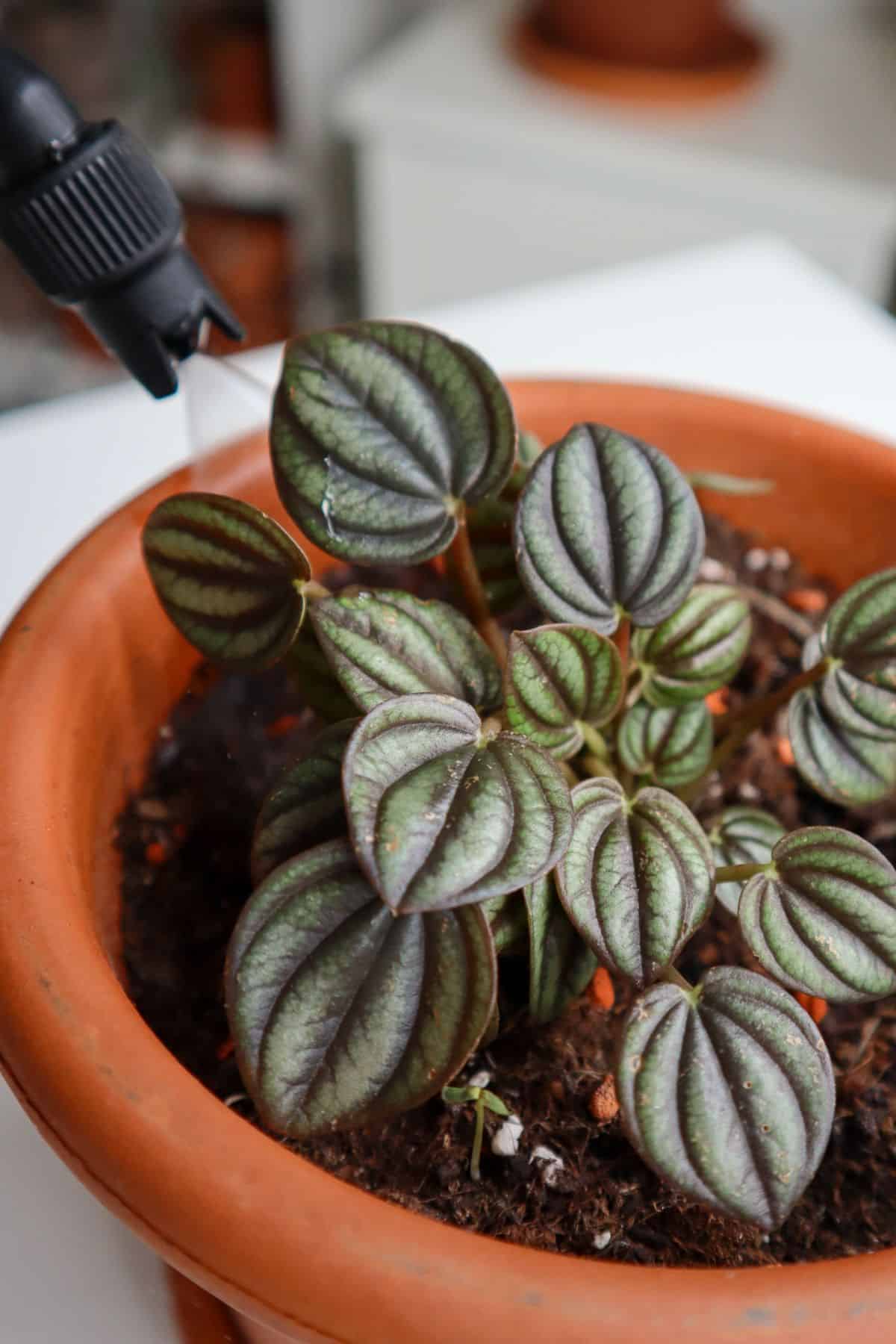
Also, choose a pot with a drainage hole! Such an easy fix.
As for terrariums, you may want to pair with other more drought-tolerant species to keep the care conditions consistent. Then, you just need to take care to balance the moisture in your terrarium so that the substrate is never waterlogged.
Substrate
Being epiphytic in nature, the Piccolo Banda is a plant that typically likes a soil-less substrate.
In other words, a chunkier mix that provides plenty of airflow around the roots.
I’d still start with a coco coir base but then supplement with a variety of materials to improve drainage, aeration, and structure, e.g., orchid bark, pumice, and lava rock.
Plus, some earthworm castings for some organic fertilizer.
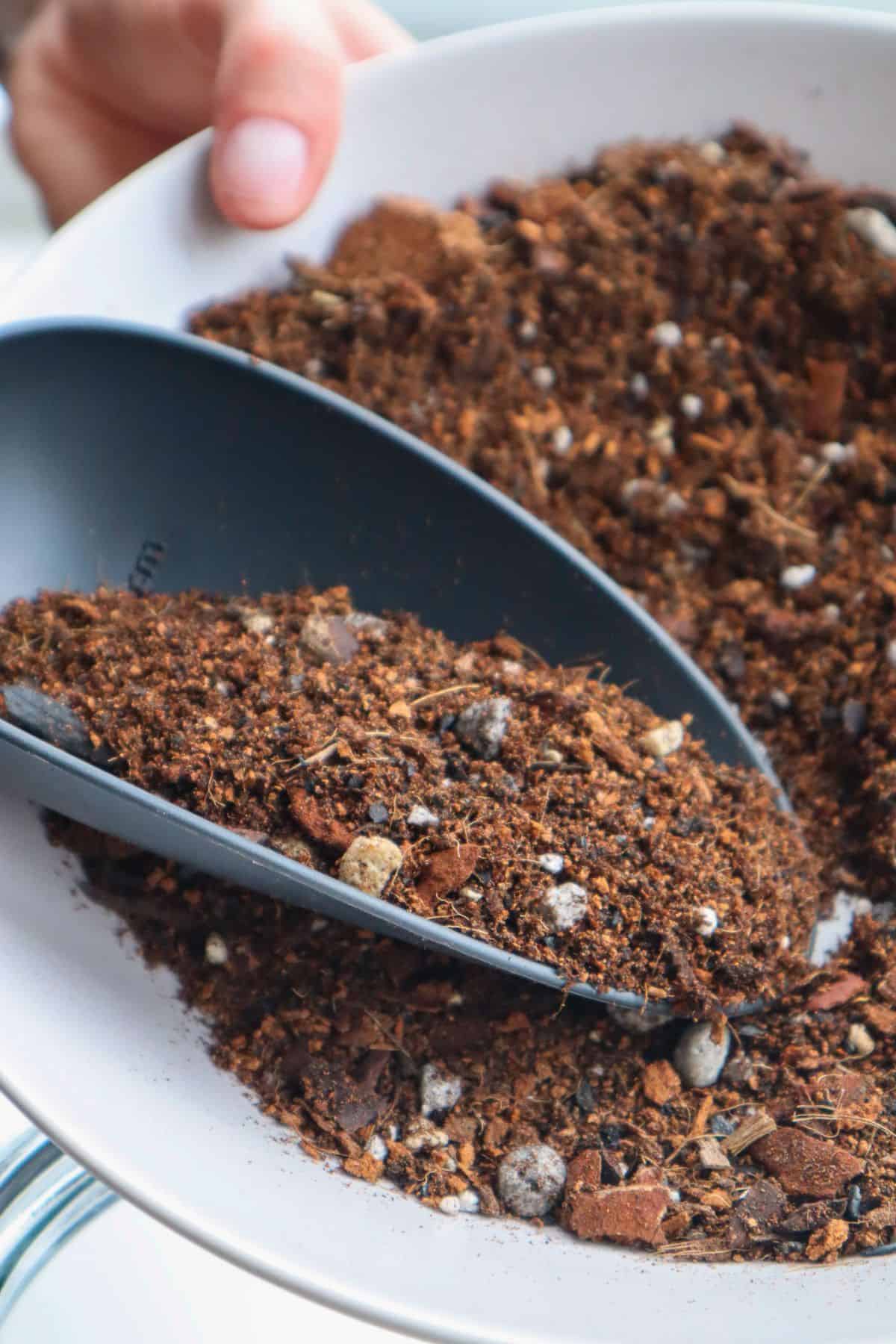
Temperature & Humidity
Peperomia Piccolo Banda is pretty low maintenance when it comes to humidity and temperature.
It’s a tropical plant, after all, so it’s not going to handle low temperatures very well. But it should do fine in most comfortable household conditions. They’re called radiator plants for a reason (they like warm air).
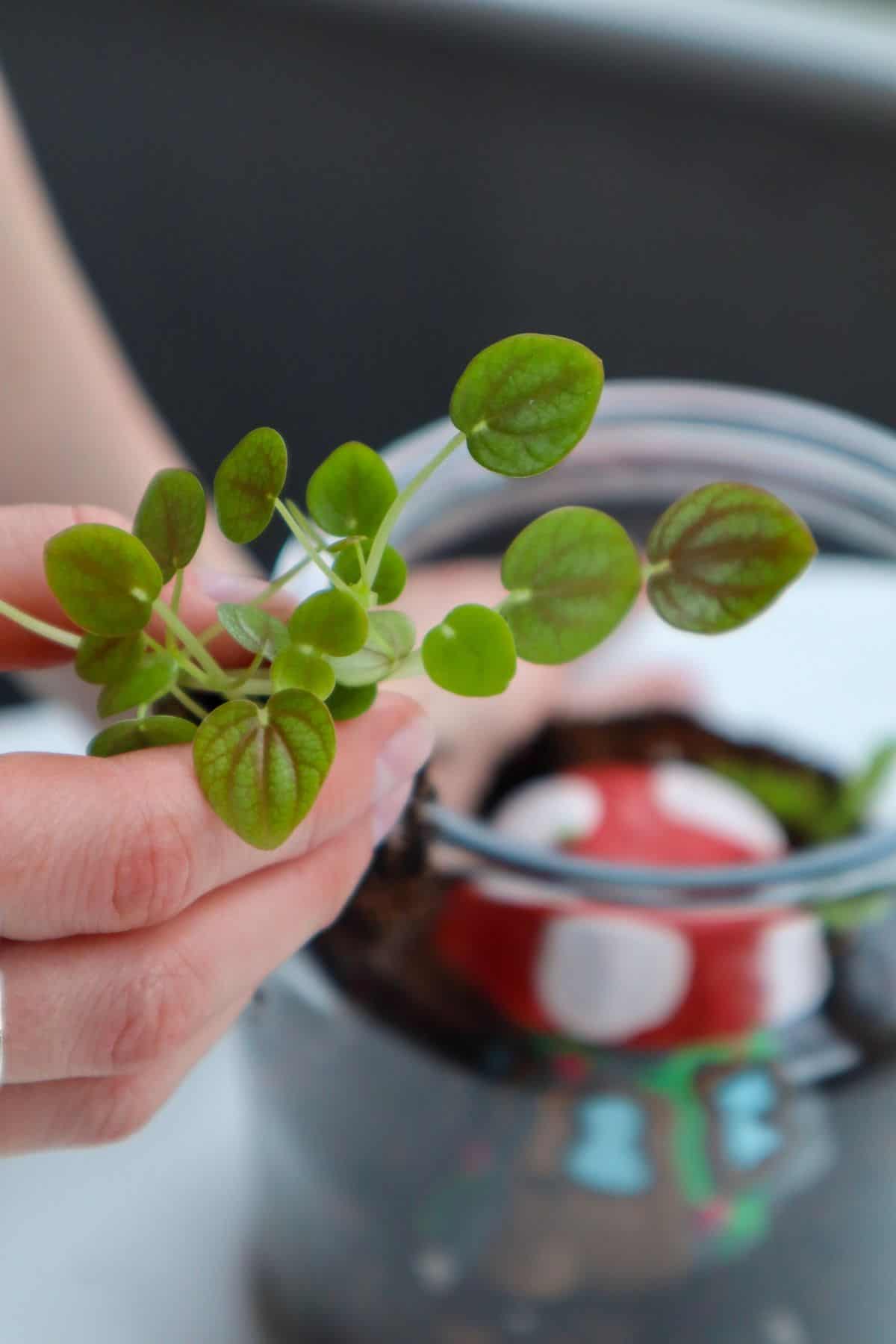
Being epiphytic, it’ll also appreciate the higher humidity levels of a terrarium, but our plant had no problems growing in a pot too.
Growth
Honestly, growth is a bit of an afterthought with this plant.
Peperomia albovittata isn’t a particularly fast grower, and even when it does reach its maximum height, it doesn’t grow much more than 12 inches (30 cm).
It’s a perfect little maintenance-free terrarium plant.
That said, it can grow some pretty gnarly flowers in the form of upright green spikes. So that’s one way to add a little height!
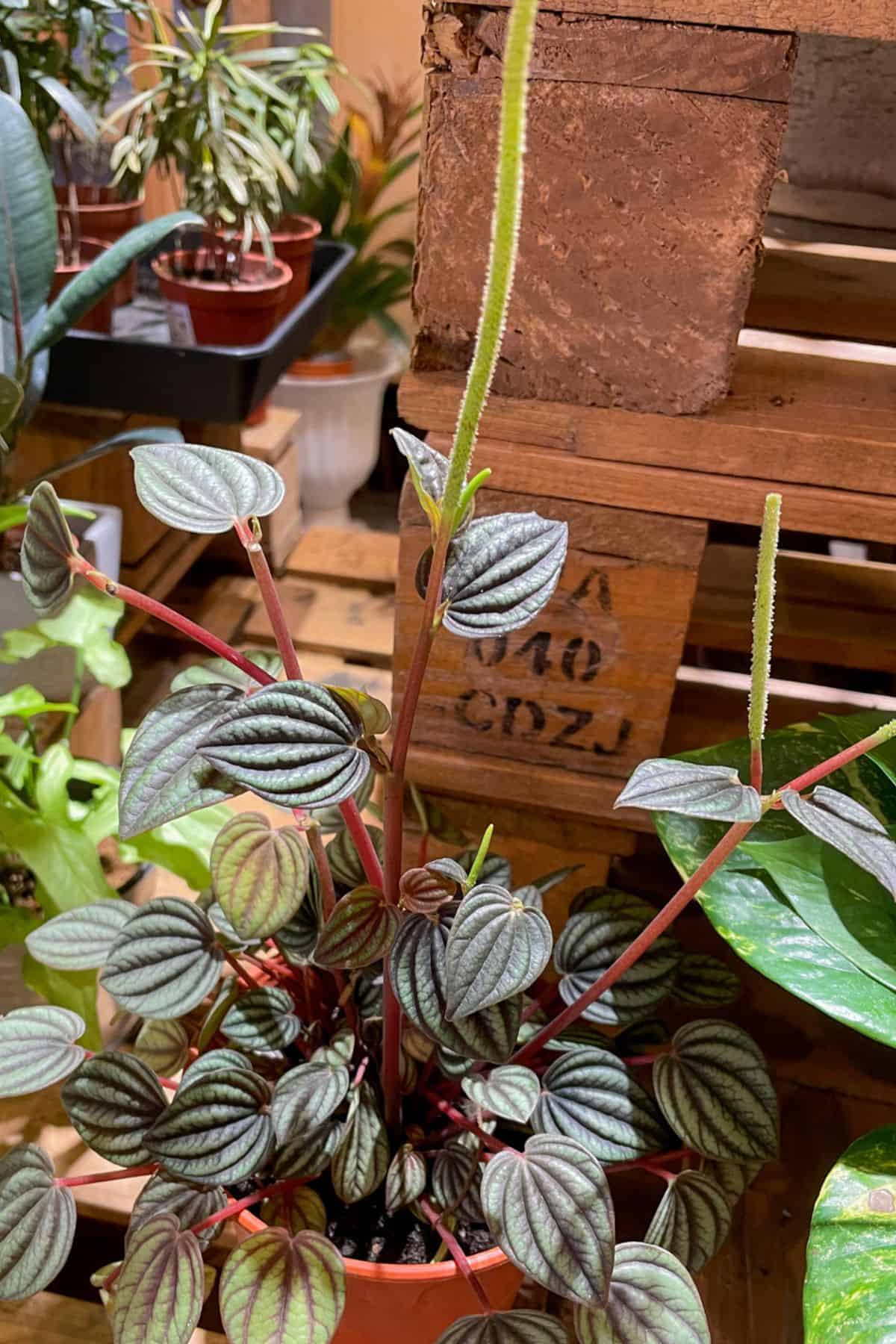
Propagation
Peperomia albovittata is a classic example of what you can do with the stem-cutting propagation method.
Starting with a healthy plant, as long as you have a viable stem with a couple of leaves, you can take a cutting and pop it straight into water. Simple!
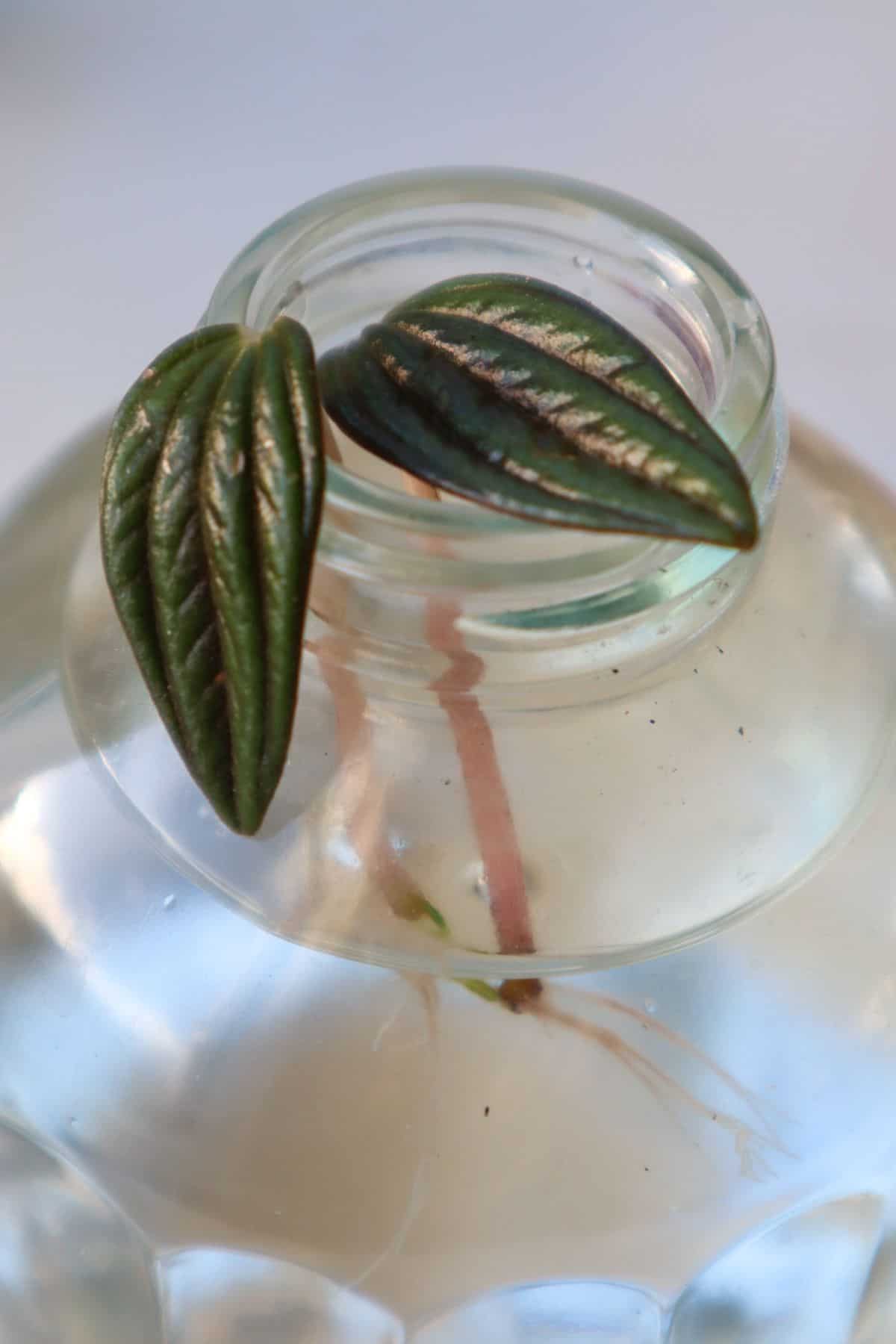
Varieties & Similar Plants
The contrasting colors and veining on the leaves of the Piccolo Banda are remarkably similar in appearance to the Ivy Leaf Peperomia, also known as the Peperomia griseoargentea.
You could argue that the indented veins also recall a Peperomia caperata, but with a genus of over 1,500 species, it’s no wonder that a few share a few traits from time to time!
👉 For more Peperomia inspiration, check out our guides on the Peperomia ‘Hope,’ Peperomia ‘Rosso,’ and the Raindrop Peperomia.
